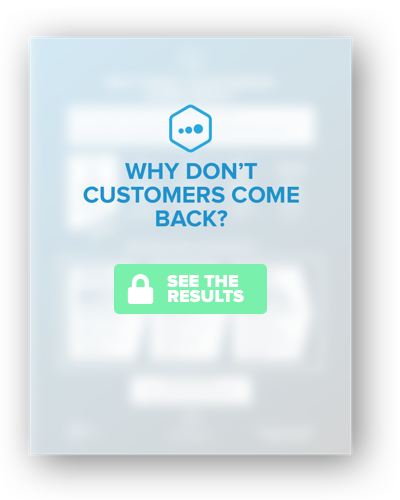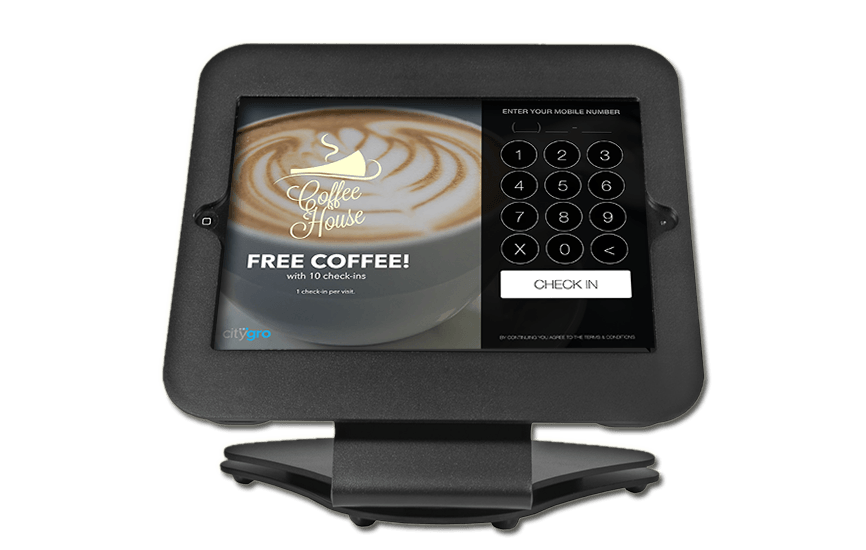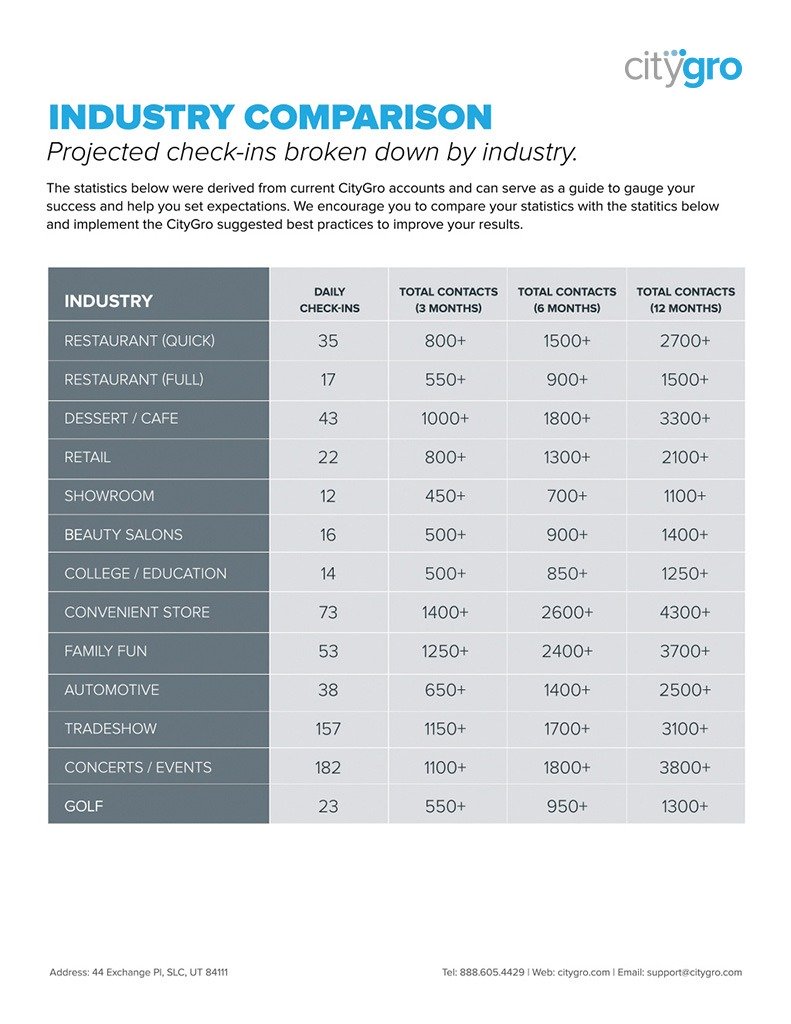Client Showcase: Trevor with FatCats Entertainment
TRANSCRIPT:
All right, we are live again here at CityGro in Salt Lake City. We’ve got Trevor here with us today from FatCats, so stoked to have you here. So Trevor, for your first time here I’ll interview, kind of the concept of what we do. So, obviously, you guys use CityGro. However, for the purpose of CityGro Live, we try and cater it to just anyone who could use good marketing advice. So, we’ll talk a little bit about best practices. There are a lot of things that we do and specialize in here at CityGro, but if you want to venture off into things that you guys do that are working for you and whatnot, that’s what we’re here for. Cool?
Ok, sounds good.
And sometimes we have questions coming in, we have, I’ll try to keep note on that, but let’s dive in. Tell us a little bit about FatCats and what you guys do.
So FatCats is a Utah based company we’re a family entertainment center. We have six locations now and…
You’ve branched outside of Utah.
Yeah, absolutely. We have three in Utah, we have one in Idaho, one in Colorado and one in Arizona. So we’re kind of all over the west and now we’re building a new location in Saratoga Springs, which is really exciting. So we’ll have seven locations. Our main focus is family entertainment. Two of our locations have movie theaters, which is kind of fun because I think a lot of people that know us in Utah think of old FatCats are bowling, you know?
Is your new one going to have a movie theater?
Yeah, So our new one in Saratoga will have a new movie theater.
Right, so there we’ll have a new movie theatre there
Exactly, exactly, me too.
And so what’s really cool is that we… we’re kind of evolving our brand with what’s going on in the world. And so that’s kind of with, you know, marketing in general, you have to like constantly evolve as well. And so you’re not only evolving your marketing but you’re evolving your brand as well, as we keep going.
So let’s dive into more of what you do, entertainment-wise. So you have the movie theaters, you have bowling, arcades… and this will just help anyone watching to kind of see how it fits in with them.
For sure.
Mini-golf.
What we do too and what will help you guys… is like… we have, I always get asked what’s your demographic? And we’re kind of lucky, where I get to say like; I get to cheat and say we don’t have a demographic because our attractions range from: You could be a little kid, you know, with miniature-glow-golf, you could be a college kid, play some laser tag or you could be an elderly gentleman or woman and bowl in a bowling league.
You’d almost have to break it down per service that you offer.
Exactly, I always tell people, I’m like… I can’t answer that. What do… what do you mean? Like what do I want to push today? If it’s an arcade push: well, then there’s my demographic, but it’s a bowling push: then there’s my… you know what I’m saying?
Yeah, It’s important as you look into marketing, how… cause we’ll dive into campaigns you’re running and things like that, but you really got to know: what am I pushing and who’s receiving these messages.
Exactly. Well, we always try to do like… OK, clearly with our Gilbert location and our Rexburg location, it’s movies focused. Like, every movie that comes out every week, that’s our message. Like it’s not hard and it may actually make my job a lot easier.
Creates really good content for you doesn’t it?
Exactly, so I don’t have to like come up and scratch my head and be like Awe, what are we going to talk about this week? It’s… well, this is the new movie that’s out. And so we try to use CityGro and the marketing there to be almost like a message board and be like, Hey this is the movie that’s out. You guys care, you want to come here for the movies and this is what it is.
So at CityGro, we kind of a broad three-step strategy. So it’s collect customer data, communicate with customers, which is really broad obviously. And then convert. So, collect, communicate, convert. Do you guys have like an overall strategy? I know that’s kind of broad question or does it easier to define it into those different services?
Yeah, I mean the biggest goal with I think with FatCats is why would anybody want a message from FatCats? Why would I want a text from you? Why would I want an email from you? Why are you reaching out to me? Like you guys are just my entertainment place. So I have to create a demand of why you would want to talk to us. So usually with a text or an email, I try to have like a sole purpose behind it. Like, I always try to put myself in the position of the customer. Like if I’m getting all these emails every single day, like then I started to get a little annoyed.
Where’s the value?
Whereas the value? Exactly! And then we try to not devalue our brand either. I try not to do a lot of offers and stuff like that because then you just start getting inundated with like, discount 10 percent off here…
And they just wait for that next discount.
Exactly, and they wait for the next discount. You create that habit. So what I try to do is actually reverse the habit and make you almost kind of wait for the emails to come and be like, oh, I knew FatCats usually does Tuesdays or Fridays, like let’s see what’s going to happen today.
So I’ve actually noticed that in your marketing, that you do a lot of time-sensitive stuff. What helps you create those time periods? Are you looking for times that you want to boost traffic because it’s slower times? Or is that usually what you’re doing?
Yeah, for sure. I mean, FatCats, in general, is a very… a weekend business.
Packed on the weekends.
We do most of our… yeah, we always do most of our business Friday, Saturday, Sunday. So yeah, I mean we do put a lot of pushes on Monday, Tuesday, Wednesday, but those are the days that someone’s going back to work, they’re tired. That’s the last thing they want to do. They just spent all this money on the weekend or with their kids
Or they want their kids back in school, back in bed.
Back in school, just go. OK, we’re going to eat at home every day this week, we’re going to be good. So what a value can I send you on Monday, Tuesday, Wednesday, and that’s perfect, you know, for something like that.
So, it probably also ties into, like whether it’s a family special or an individual special.
Exactly. Yeah.
Kind of thing. Interesting… OK, so, let’s kind of walk me through the steps then, because obviously before you can email and text people, you have to acquire their data and permission to reach out to them. How do you do that and what’s been successful for you?
So we’ve changed a lot over the… I mean, from when I started with you guys, we tried the certain ways, we tried the kiosk, We found the best way to do it is at the point of sale, whether it’s with our loyalty program or “Hey, have you signed up for our email?”, we try to click that data right then and there. We’ve also found really good success with, I would say like contests and surveys, that way. Where it doesn’t feel like we’re trying to trick you, but it’s kind of… you get it, we get it. Like you’re going to give us our information, but we’re going to give you something, a little bit back, you know. Does that make sense?
That makes a lot of sense. So what channel are you using when somebody signs up for the contest, whether it’s a kiosk or are you using paper forms?
Yeah, so sometimes we do like Facebook contest and not always with us. We’ll team up with another, whether it’s, you know, in the Utah Market would be like KSL or in Arizona we work with one of their studios and we do like a Facebook contest with a $50 gift card and you know, by entering your information, you know, blah, blah blah.
Gotcha
We found that to be good because they’re opting in, they want to be in, you know what I’m saying? They’re saying OK. If we’re constantly shoving it down their throat, like, “Dude, sign up, sign up”. They’re going to be like, “No, I don’t want… like something’s up”. And so my biggest thing is like transparency. Like I’m a human as well like I don’t want that information. I get blasted with emails every day. I don’t want that. You know what I mean?
Well, you do a good job. I think that the receiving end, it does seem like you guys focus on being in the receiver’s shoes and thinking that through. What are they going to like and then what value can we provide?
Absolutely.
Can you think of any campaigns off the top of your head that have been really successful or even really unsuccessful that you’ve learned from and changed?
Yeah, our $5 Tuesday, which I’ll explain what five-dollar Tuesday is, then hop back. So, five-dollar Tuesdays is every Tuesday, our movies are five bucks. It’s kind of like an industry standard thing. Well, we’ve found is when we started Gilbert we were really struggling. We had like, you know like it was trying to get people to be like “What is FatCats?” and in Arizona, which they didn’t know who we were. So five-dollar Tuesday was like a huge campaign for us. I would say five-dollar Tuesday and Star Wars was like our biggest marketing…
Your boosters?
Was our booster.
So were they already doing five-dollar Tuesday in Arizona? Was there anything there?
They weren’t. Which is, it’s a huge thing in Utah, but they weren’t doing it in Arizona, so we kind of like develop that down there, which was cool and it’s just been so successful. So to answer your question, yeah, I mean five-dollar Tuesday email blasts do really well for us. They have a huge click through and I think, it just is a really good, really quick, “Hey this move’s five bucks, remember?”, like “Oh yeah, let’s go do it.” So we found that to be really successful. I think sometimes the ones that are the most unsuccessful, if when you put a lot of information in your text or your email.
Ah, you don’t have time to read.
No one has time, they don’t want to read it. Tell me what this email is about. I would say your subject line is sometimes the most important because someone’s going to look at that and be like, OK, what are you have to say today? Oh, I don’t care. And then swipe away. So I think that’s just as important. So I’ve tried to be a lot better with that. Sometimes it fails, sometimes its good.
Well. So we talked a lot about A-B testing here at CityGro, and we’re always looking at different campaigns. It seems like. I see that in fact, the one where we were talking about earlier, off the show was your arcade, your Wednesday arcade. And I noticed a phrase like “it’s now here to stay”. Did you guys test that out a little bit before you brought it here to stay or do you do that often?
Well, we do some time, like with the verbiage, like you said is like kind of fun to like… I guess create like an urgency but also like remind people. Like it never really went away. It’s just now “It’s here to stay”, kind of like introducing it that way I thought it was kind of fun. If I’m being completely honest, there wasn’t too much thought behind it, it was just kind of like…
But it gives up the perception from my side that hey, this is here to stay. It must be working.
Yeah. No, I’m glad that that came across as that way. Cool.
Yeah. So let’s talk about ROI. How do you measure ROIs? What way do you guys look at it? Do you look at it on a campaign level or is it easier to just kind of look at full ad spend month over month.
Yeah, I’d say like on a broad scope, I think it’s more important. I think if you get into the weeds and you’re watching every email blast, and every text blast and you’re like, “Oh my gosh, this one’s bad and this one’s good”. Like you’re going to pull your hair out.
Yeah, you guys do a lot of stuff.
We do a lot of stuff so it’s like …we look at things like it’s really important to get with your SEO company, or like my partner does a lot of the website and so it’s really important to get with them and see, OK, like how many click-throughs did we get? How many? And you know CityGro does a good job of saying what that is, you know, but like, and then watching it on your side, you know, how many… oh wow, we’ve had 50 people click on a website today. You know, was it due to that boost? And then you can time it and see where it’s at. You know, I think those… that’s just as important as converting someone into like actual dollars.
So just monitoring the success of it. Awesome. Yeah. That makes a lot of sense. Well, so on a large scope, is there any other marketing tips that you would give to one of our viewers if they’re looking this and saying, “How can I do better in my store?”
Yeah, I mean I think one of my, like… I heard something the other day is like… you know, the customer is always right is like a thing we’ve always heard, you know, like the customer is always right.
That’s a nice cliché there.
It’s a nice thing to say, but I like… somebody said the other day it was like, your customer is not always right, but that doesn’t mean that we can’t listen. And I really liked that because I think that proves like, OK, you’re not right, but I want to hear what you’re saying because I want to try to make FatCats better by your, what you’re saying, you know? And so that’s what I tell a lot of our team and everything like that, you know.
Do you have specific feedback channels that you kind of monitor, like what ways do customers give you feedback? Is it mostly in-store?
Oh yeah. I mean, in-store we do a survey that’s like “Tell us how it is” and that comes right to us, you know, but we monitor all channels. So your yelp, your Google, your Facebook; those are really important for us. And I send those to my GM’s every night. This is what your customer is saying about us. Like this is our… this is… we could have the most beautiful center in the world, but if our customers telling us we’re slow or we’re not doing a very good job, then that’s what we need to fix.
We got a cool new feature you just reminded me of.
A plug.
Yeah, this is a plug for our feature. But really, anytime you can get these feedback channels cleanly to you and your management, it’s a two way texting, like a “Text the Boss” feature where we find a lot of people are, are kind of nervous to go walk up to a manager and say, hey, your bathrooms are terrible, or hey, you’ve got something going on here. They just ignore it. Right? And so we’ll have a text option where you can text a business just like you could text a friend. And uh, from a business side you don’t want to text back with your phone number. You don’t want to disclose your personal information. So CityGro will forward it from a different, from a CityGro phone number where, or your business line if it’s text-enabled, where you can do back and forth communication.
That’s really cool because as we evolve as a culture, nobody wants to be on the phone. I can’t think of the times that I’ve asked a customer. They’re like livid. Like, “I hate you guys. You guys are so terrible.” And we’re like, “OK, what’s your phone number? We’re going to have our GM call, you.” “No, don’t call me, don’t call me!”
“I don’t want to hear from you. I’m just letting you guys know.”
“I don’t want to hear from you. I’m just letting you guys know, you guys are not very good.” “OK, great.” I think that’s a huge. I think that’d be a huge bonus because a lot of people text anyway and so you can just… “You know what text our manager, tell us that we’re not doing very good.”
Hang a sign that says “If you have an issue, text us.”
I’ve seen those signs before where they say, you know, text John, he’s our, he’s our manager on duty, you know, he’s our boss. I think that I think by putting a name to a face, to an email, to a number, helps a lot.
Cool. Cool. That’s good feedback. You don’t even have to text it to me. Just tell it to me right here. All right. Awesome. Well, thank you so, so much for being on the show with us today. I think that covers it from my perspective.
OK.
Anything that you, that you’re just dying to get in there?
You know, I think one thing I like, my biggest thing with CityGro is I like to have… I look at CityGro. I mean I know you guys,
Let’s hear it.
But I like to have, it feels like it’s my own and I feel like it’s FatCats’ way of not spending a lot of money and reaching out to our guests. I mean we’re a pretty big company but we don’t have beaucoup bucks and so this is a really nice way of being like, OK, tell your customers what’s going on. You know, we don’t break the bank, we don’t feel like oh my gosh, we just send an email blast like we’re going to, you know, like our marketing budgets over, you know, but it’s not. And so I think that’s one of my favorite things about it. And then I also, like we talked about earlier, I like that we keep it consistent and what am I trying to say? Like not very often because I don’t want to be intrusive into someone’s life. So I think we do a good job with that.
So I think if I could sum up do some final thoughts on your behalf, putting words in your mouth right now. It really seems like you’re really big on the end user getting it the way that they have value to it. So as often as you can get on the other side of the table, you guys are doing that and it’s probably what’s led to a lot of your success.
You see it in the news all the time, you know, the customers. I always say, you know, if a customer reaches out to you and you don’t respond back, whether it’s yell, text, email, and if you’re not responding, people are not going to take that very well. Like people want to talk. They want to engage on Facebook and Twitter. People want that. And so give that to them. Let them have a platform.
Awesome… awesome. OK, well I appreciate you being here again. Until next time guys, we’ll see you then.






 Get this section from Jon. Get this section from Jon. Get this section from Jon. Get this section from Jon. Get this section from Jon. Get this section from Jon. Get this section from Jon. Get this section from Jon. Get this section from Jon.
Get this section from Jon. Get this section from Jon. Get this section from Jon. Get this section from Jon. Get this section from Jon. Get this section from Jon. Get this section from Jon. Get this section from Jon. Get this section from Jon.

